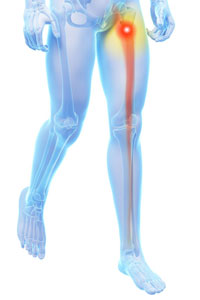 Arthritis injection therapies provide a safe and non-invasive alternative to surgery. With a proper and prompt diagnosis, the treatment of the affected area will typically allow most patients to resume normal activities and return to work in a relatively short period of time.
Arthritis injection therapies provide a safe and non-invasive alternative to surgery. With a proper and prompt diagnosis, the treatment of the affected area will typically allow most patients to resume normal activities and return to work in a relatively short period of time.
The longest and largest nerve in the body is the sciatic nerve and it begins at the base of the spine and branches downward through both legs. Pain that radiates along the path of the sciatic nerve can vary from infrequent to incapacitating and is known as the Sciatica condition. Tingling, numbness, or weakness is common, as well as pain in the legs, known as sciatica pain. Depending on the cause of sciatica pain, most treatment methods usually are non-surgical.
What Exactly are the Symptoms of Sciatica?
Pain that travels from the lower back to the buttocks and legs, and possibly the feet and toes describes the classic symptoms of sciatica pain.
Usually, this pain radiates from the lower back down to the buttocks and back of the thigh or calf areas. This is not always the case, as pain can be found anywhere along the sciatic path. The pain can be manifested as shooting pains, a burning sensation, cramping, or feels like the affects of electric shock. The severity of pain can range from moderate to excruciating.
The Pain Management Center offers real relief in the form of several effective options.
Please call or email us today to learn about more details and to schedule your appointment to address your sciatic pain.
What are the Causes of Sciatica Pain?
This pain condition is not a disorder but rather, a symptom of other underlying issues. Pain that extends from the lower back and travels along this large nerve down to the back of the legs is referred to as sciatica pain. The root causes can be numerous including pinched or irritated nerves in the lower back, herniated discs, spinal or neural foramina stenosis, bone spurs, and facet hypertrophy – which is overgrowth or enlargement of bones. These disorders create a narrowing of the opening along which the nerve travels and causes the previously described pain conditions.
What are the Risk Factors for Sciatica?
There are diverse contributing factors to the development of sciatica. Genetic problems, a history of diabetes, age, lifestyle, and other heath issues are all risk factors to consider. Work-related back strains and the necessity of bending, twisting, and carrying heavy loads all can add to the likelihood of being at risk for having sciatica conditions.
Treatment Options that are Effective for Sciatica Include:
There are a number of treatment options that help reduce the painful symptoms of sciatica, which include:
- Physical Therapy
- Epidural Steroid Injections
- Caudal Steroid Injection
- Neurostimulation Therapy
- Medication Management
- Chiropractic Care
Percutaneous Discectomy
Please contact us at the Pain Management Center to schedule your appointment to begin best treating of your sciatica condition today!




